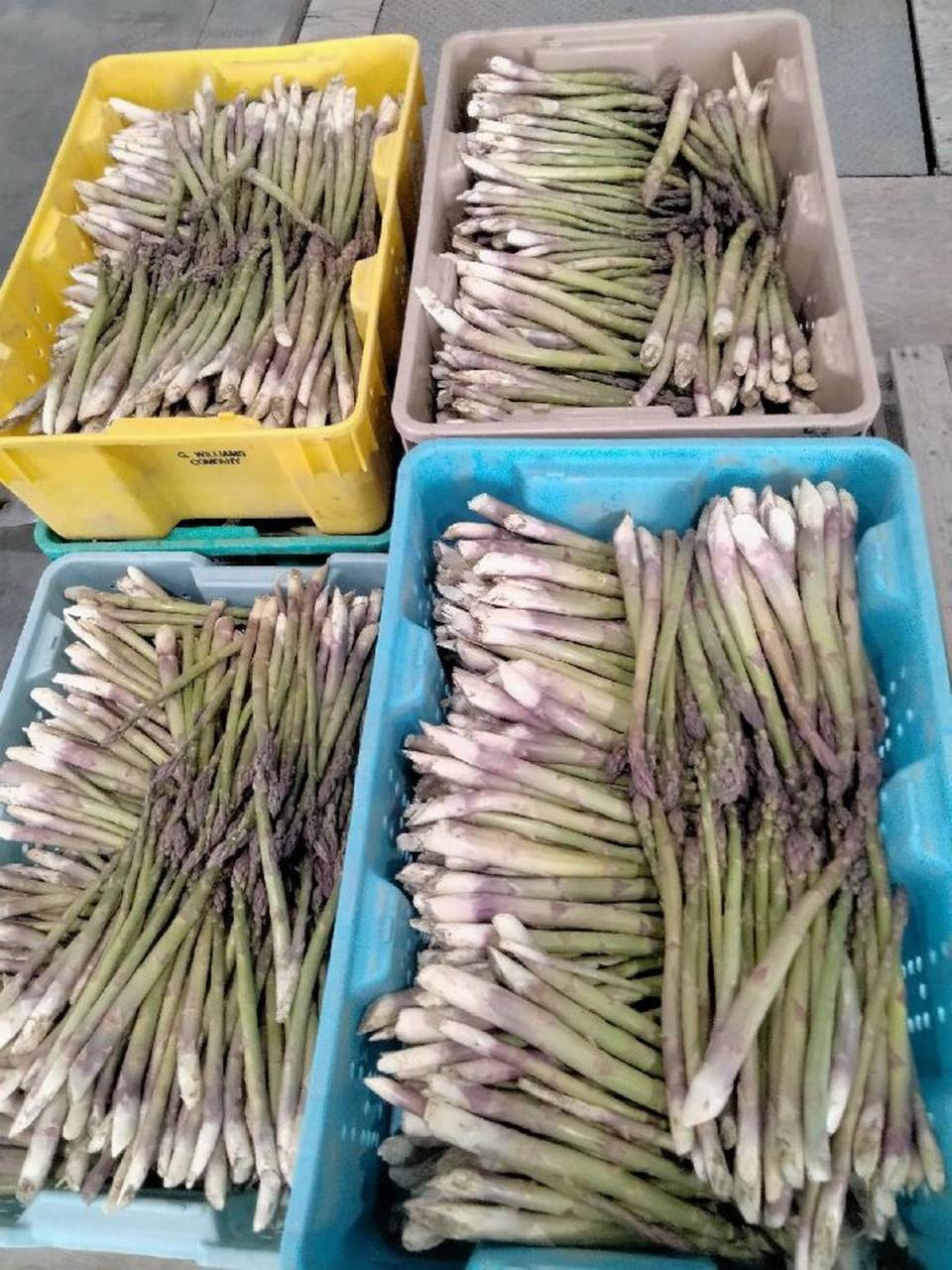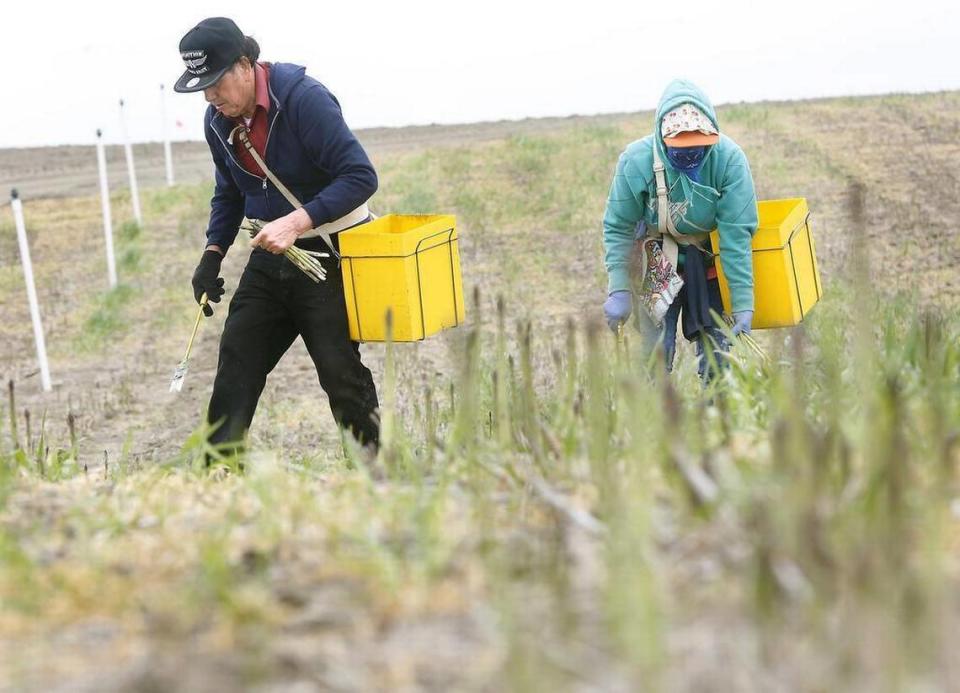Cool weather delays annual harvest of Washington’s ‘king of vegetables’ — asparagus
Washington farmers began cutting asparagus in the Mid-Columbia this week. It’s too late to appear on most Easter menus, but the first crop of the season is beginning to appear.
“There’s a field over by Burbank that’s always the earliest in the state,” said Alan Schrieber, executive director of the Washington Asparagus Commission and an asparagus grower in Ephrata, north of Pasco. “It’s a little warmer there.”
Schreiber expects to begin cutting asparagus in his field few days after Easter, with packers coming in a few days later to begin their work. “It’s getting very close,” he said.
Asparagus is a small but important part of Washington’s $10 billion ag industry, excluding food processing.

It is a perennial that sends up shoots — mostly green or purple in Washington — when the weather warms in the spring, typically around Easter.
It is the first of Washington’s 300-plus crops to be harvested and is the traditional first sign of spring as well as the kickoff for farming.
Cherries come next. But as the first to mature, asparagus holds a special place in the hearts of farmers.
“It’s the king of vegetables,” Schreiber said, touting its nutritional content and antioxidant properties.

Cool weather delayed the start by about five days this year.
The 2021 and 2022 harvests started late too. Schreiber admitted he was frustrated that the weather hadn’t warmed up and by unexpected subfreezing temperatures a week ago.
“I’m going to an Easter dinner on Saturday and I told them I was going to have asparagus. And I’m not going to have any,” he said.
Labor costs
The Washington asparagus harvest has been in decline in recent years, according to the U.S. Department of Agriculture’s National Agricultural Statistics Service (NASS).

It peaked at $23.2 million in 2020, but fell to $14.6 million in 2021 and to $13.5 million in 2022.
Schreiber said the NASS paints a gloomier picture than the one he sees.
But he is not surprised that growers are pulling back in Washington or California or Michigan, the other two major asparagus producing states.
The U.S. can’t compete low-cost imports from Mexico and Peru, where labor costs less.
Washington farmers lost their exemption from overtime rules in 2022. That means workers earn $25 an hour, rising to $38 for overtime. In contrast, Mexican workers are paid $20 a day, he said.
“We have the highest labor costs in the western hemisphere,” he said. “We can’t compete with Mexico and Peru.”
In honor of National Asparagus Day, May 24, the USDA calculated that Americans consume 500 million pounds of asparagus each year, with 80%-90% imported from Mexico and Peru.

